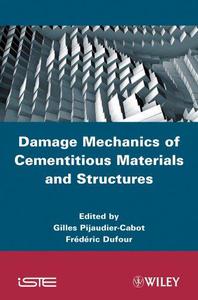
Damage Mechanics of Cementitious Materials and Structures By
2011 | 264 Pages | ISBN: 1848213409 | PDF | 8 MB
The book, prepared in honor of the retirement of Professor J. Mazars, provides a wide overview of continuum damage modeling applied to cementitious materials. It starts from micro-nanoscale analyses, then follows on to continuum approaches and computational issues. The final part of the book presents industry-based case studies. The contents emphasize multiscale and coupled approaches toward the serviceability and the safety of concrete structures.Content: Chapter 1 Bottom?Up: From Atoms to Concrete Structures (pages 1-18): Franz?Josef Ulm and Roland J?M PellenqChapter 2 Poromechanics of Saturated Isotropic Nanoporous Materials (pages 19-50): Romain Vermorel, Gilles Pijaudier?Cabot, Christelle Miqueu and Bruno MendiboureChapter 3 Stress?based Non?local Damage Model (pages 51-88): Cedric Giry and Frederic DufourChapter 4 Discretization of Higher Order Gradient Damage Models Using Isogeometric Finite Elements (pages 89-120): Clemens V Verhoosel, Michael A Scott, Michael J Borden, Thomas J.R Hughes and Rene de BorstChapter 6 Macro and Mesoscale Models to Predict Concrete Failure and Size Effects (pages 121-160): David Gregoire, Peter Grassl, Laura B Rojas?Solano and Gilles Pijaudier?CabotChapter 6 Statistical Aspects of Quasi?Brittle Size Effect and Lifetime, with Consequences for Safety and Durability of Large Structures (pages 161-182): Zdenek P Bazant, Jia?Liang Le and Qiang YuChapter 7 Tertiary Creep: A Coupling Between Creep and Damage - Application to the Case of Radioactive Waste Disposal (pages 183-202): J.M Torrenti, T de Larrard and F BenboudjemaChapter 8 Study of Damages and Risks Related to Complex Industrial Facilities (pages 203-220): Bruno Gerard, Bruno Capra, Gael Thillard and Christophe BaillisChapter 9 Measuring Earthquake Damages to a High Strength Concrete Structure (pages 221-250): Patrick Paultre, Benedikt Weber, Sebastien Mousseau and Jean Proulx

DK Eyewitness Arizona and the Grand Canyon (DK Eyewitness Travel Guide) by DK Eyewitness
English | June 14th, 2022 | ISBN: 0241565952 | 178 pages | True PDF | 33.30 MB
The best things to do in Arizona and the Four Corners, including the magnificent Grand Canyon and the spectacular Monument Valley, are showcased with fantastic photography, illustrations, and detailed descriptions. Explore the diverse towns and cities of Flagstaff, Phoenix, and Tucson, before heading to admire Canyon de Chelly National Monument, known for its archaeological sites and spectacular scenery.

Cyberwar and Information Warfare By Daniel Ventre (ed.)
2011 | 426 Pages | ISBN: 1848213042 | PDF | 8 MB
Integrating empirical, conceptual, and theoretical approaches, this book presents the thinking of researchers and experts in the fields of cybersecurity, cyberdefense, and information warfare. The aim of this book is to analyze the processes of information warfare and cyberwarfare through the historical, operational and strategic perspectives of cyberattacks. Cyberwar and Information Warfare is of extreme use to experts in security studies and intelligence studies, defense universities, ministries of defense and security, and anyone studying political sciences, international relations, geopolitics, information technologies, etc.Content: Chapter 1 Cyberwar and its Borders (pages 1-30): Chapter 2 War of Meaning, Cyberwar and Democracies (pages 31-81): Chapter 3 Intelligence, the First Defense? Information Warfare and Strategic Surprise (pages 83-112): Chapter 4 Cyberconflict (pages 113-244): Chapter 5 Operational Aspects of a Cyberattack (pages 245-284): Chapter 6 Riots in Xinjiang and Chinese Information Warfare (pages 285-366): Chapter 7 Special Territories (pages 367-394):
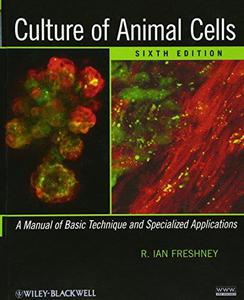
Culture of Animal Cells: A Manual of Basic Technique and Specialized Applications, Sixth Edition By R. Ian Freshney(auth.)
2010 | 772 Pages | ISBN: 0470528125 | PDF | 87 MB
This is the sixth edition of the leading text in the basic methodology of cell culture, worldwide. Rigorously revised, it features updates on specialized techniques in stem cell research and tissue engineering; updates on molecular hybridization, somatic cell fusion, hybridomas, and DNA transfer; new sections on vitrification and Organotypic Culture, and new chapters on epithelial, mesenchymal, neurectodermal, and hematopoietic cells; germs cells/stemcells/amniocytes; and non-mammalian/avian cells. It is written for graduate students, research and clinical scientists, and technicians and laboratory managers in cell and molecular biology labs and genetics labs.PowerPoint slides of the figures as well as other supplementary materials are available at a companion website:www.wiley.com/go/freshney/cellcultureContent: Chapter 1 Introduction (pages 1-10): Chapter 2 Biology of Cultured Cells (pages 11-23): Chapter 3 Laboratory Design, Layout, and Equipment (pages 25-36): Chapter 4 Equipment and Materials (pages 37-56): Chapter 5 Aseptic Technique (pages 57-70): Chapter 6 Safety, Bioethics, and Validation (pages 71-88): Chapter 7 Culture Vessels and Substrates (pages 89-98): Chapter 8 Defined Media and Supplements (pages 99-114): Chapter 9 Serum?Free Media (pages 115-132): Chapter 10 Preparation and Sterilization (pages 133-162): Chapter 11 Primary Culture (pages 163-186): Chapter 12 Subculture and Cell Lines (pages 187-206): Chapter 13 Cloning and Selection (pages 207-225): Chapter 14 Cell Separation (pages 227-237): Chapter 15 Characterization (pages 239-268): Chapter 16 Differentiation (pages 269-278): Chapter 17 Transformation and Immortalization (pages 279-297): Chapter 18 Contamination (pages 299-315): Chapter 19 Cryopreservation (pages 317-334): Chapter 20 Quantitation (pages 335-364): Chapter 21 Cytotoxicity (pages 365-381): Chapter 22 Specialized Cells (pages 383-432): Chapter 23 Stem Cells, Germ Cells, and Amniocytes (pages 433-462): Chapter 24 Culture of Tumor Cells (pages 463-479): Chapter 25 Three?Dimensional Culture (pages 481-495): Chapter 26 Scale?Up and Automation (pages 497-515): Chapter 27 Specialized Techniques (pages 517-532): Chapter 28 Training Programs (pages 533-568): Chapter 29 Problem Solving (pages 569-591): Chapter 30 In Conclusion (page 593):
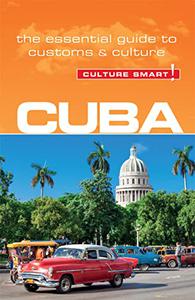
Cuba - Culture Smart!: The Essential Guide to Customs & Culture by Russell Maddicks
English | July 1, 2016 | ISBN: 1857338480 | 146 pages | PDF | 3.81 Mb
Cuba is a land of contradictions that is easy to enjoy but difficult for first-time visitors to decipher. The largest island in the Caribbean, it is a tropical paradise that Christopher Columbus called "the most beautiful land that human eyes have ever seen." It is famous for the romantic charm of its crumbling colonial cities, the beauty of its white sand beaches, and its irresistible Afro-Cuban dance beats. But it is also a land of shortages and tight government control, which has been in a sixty-year political standoff with its superpower neighbor, the USA. The homegrown version of single-party socialism created by Fidel Castro has kept Cuba in a Cold War time warp that only now is beginning to change. As travel restrictions are relaxed US tourists can once again visit the island. Greater flexibility toward private enterprise is opening it up to boutique hotels and high-quality home-based restaurants. There is a boom in special-interest tourism for cyclists, hikers, birdwatchers, and scuba divers, while foreign entrepreneurs are eagerly exploring investment opportunities. Culture Smart! Cuba will take you beyond the usual descriptions of Havana nightlife, vintage cars, and hand-rolled cigars and give you an insider's view of an island that is teetering on the brink of historic change. It offers insights into Cuba's fascinating history, national icons, unique food, vibrant cultural scene, and world-renowned music. Practical tips help business travelers gain an edge on the competition. But most of all, this book aims to show you how best to break the ice and get a better understanding of the infinitely resourceful Cuban people, who despite severe hardships and shortages over many years remain optimistic and fiercely proud of their heritage and culture.

Güler Aras, Coral Ingley, "Corporate Behavior and Sustainability: Doing Well by Being Good"
English | 2019 | pages: 284 | ISBN: 0367880660, 1472457692 | PDF | 2,9 mb
Companies can no longer expect to engage in dubious or unethical corporate behaviour without risking their reputation and damaging, perhaps irrevocably, their market position. Irresponsible corporate behavior not only deprives shareholders of long-term returns but also ultimately imposes a cost on society as a whole. Sustainable business is about ensuring that entities contribute toward positive social, environmental, and economic outcomes. Bad business behaviour is costly for stakeholders, for markets, for society, and the economy alike.
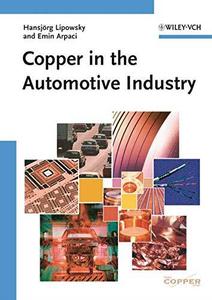
Copper in the Automotive Industry By Dipl.?Ing. (TU) Hansjorg Lipowsky, Dr. Emin Arpaci(auth.)
2007 | 192 Pages | ISBN: 3527317694 | PDF | 2 MB
A comprehensive and substantial source of information on the properties, production, processing and applications of copper and copper alloys, of interest to metallurgical, development, design and testing engineers in the automotive and other industries using copper. The authority behind this book - the German Copper Institute - was founded in 1927 and is the technical-scientific advisory center for all questions concerning applications and the processing of copper and copper alloys in Germany. For more than 75 years, the technical scientific advisory and information service of the institute has been providing expert help free of charge. It is supported by the copper industry, the European Copper Institute (ECI) and The International Copper Association. It is competent and active in matters concerning the use of copper not only in automotive but also in all kind of industrial applications, in building construction, in electrical engineering and in questions concerning copper's importance for health.Content: Chapter 1 Raw Material Resources (pages 1-2): Chapter 2 Production (pages 3-9): Chapter 3 Classification of Copper Materials (pages 11-28): Chapter 4 Wrought Copper Materials (pages 29-43): Chapter 5 Copper Casting Materials (pages 45-53): Chapter 6 Properties of the Copper Materials (pages 55-77): Chapter 7 Working with Copper Materials (pages 79-116): Chapter 8 Design Notes (pages 117-121): Chapter 9 Application (pages 123-125): Chapter 10 Usage Properties (pages 127-143):
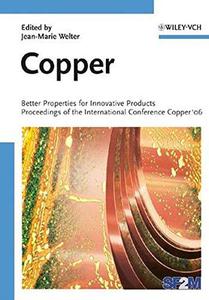
Copper: Better Properties for Innovative Products By
2006 | 332 Pages | ISBN: 3527318844 | PDF | 5 MB
Copper was since ever the companion of the development of mankind. Notwithstanding this long history, copper as we know it today is a rather young material. Indeed, the discovery and use of electricity during the 19th century led to a repositioning of copper and opened fantastic opportunities. It started a new career as the metal for generating, transporting and using energy, power and information. This book contains the Proceedings of the International Conference "Copper 06". It gives a broad and up-to-date overview on the recent progress in research and development of copper and copper alloys for usage in modern industrial applications. The current challenges and changes in the international copper industry are also highlighted and the reader gets insight in the driving forces on the international copper market.Content: Chapter 1 Copper on the Move - Where it Comes from, Where it Goes to (pages 1-17): Martin RuhrbergChapter 13 Deformation and Recrystallization Textures and Microstructures in Cold?Drawn Copper (pages 101-107): T. Baudin, A. L. Etter, M. H. Mathon, S. Jakani, P. Gerber, D. Solas and R. Penelle

Copernicus, Darwin, & Freud: Revolutions in the History and Philosophy of Science By Friedel Weinert(auth.)
2008 | 294 Pages | ISBN: 1405181842 | PDF | 3 MB
Using Copernicanism, Darwinism, and Freudianism as examples of scientific traditions, Copernicus, Darwin and Freud takes a philosophical look at these three revolutions in thought to illustrate the connections between science and philosophy. Shows how these revolutions in thought lead to philosophical consequences Provides extended case studies of Copernicanism, Darwinism, and Freudianism Integrates the history of science and the philosophy of science like no other text Covers both the philosophy of natural and social science in one volume Content: Chapter 1 Nicolaus Copernicus: The Loss of Centrality (pages 3-92): Chapter 2 Charles Darwin: The Loss of Rational Design (pages 93-184): Chapter 3 Sigmund Freud: The Loss of Transparency (pages 185-270):
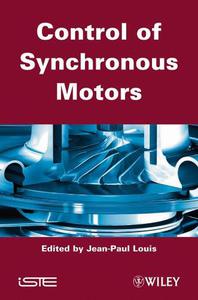
Control of Synchronous Motors By Jean?Paul Louis(auth.)
2011 | 425 Pages | ISBN: 1848212739 | PDF | 10 MB
Synchronous motors are indubitably the most effective device to drive industrial production systems and robots with precision and rapidity. Their control law is thus critical for combining at the same time high productivity to reduced energy consummation. As far as possible, the control algorithms must exploit the properties of these actuators. Therefore, this work draws on well adapted models resulting from the Park's transformation, for both the most traditional machines with sinusoidal field distribution and for machines with non-sinusoidal field distribution which are more and more used in industry. Both, conventional control strategies like vector control (either in the synchronous reference frame or in the rotor frame) and advanced control theories like direct control and predictive control are thoroughly presented. In this context, a significant place is reserved to sensorless control which is an important and critical issue in tomorrow's motors.Content: Chapter 1 Synchronous motor controls, Problems and Modeling (pages 1-48): Chapter 2 Optimal Supply and Synchronous Motors Torque Control (pages 49-117): Chapter 3 Optimal Supplies and Synchronous Motors Torque Controls. Design in the d?q Reference Frame (pages 119-172): Chapter 4 Drive Controls with Synchronous Motors (pages 173-220): Chapter 5 Digital Implementation of Vector Control of Synchronous Motors (pages 221-250): Chapter 6 Direct Control of a Permanent Magnet Synchronous Machine (pages 251-281): Chapter 7 Synchronous Machine and Inverter Fault Tolerant Predictive Controls (pages 283-304): Chapter 8 Characterization of Control without a Mechanical Sensor in Permanent Magnet Synchronous Machines (pages 305-346): Chapter 9 Sensorless Control of Permanent Magnet Synchronous Machines: Deterministic Methods, Convergence and Robustness (pages 347-400):


